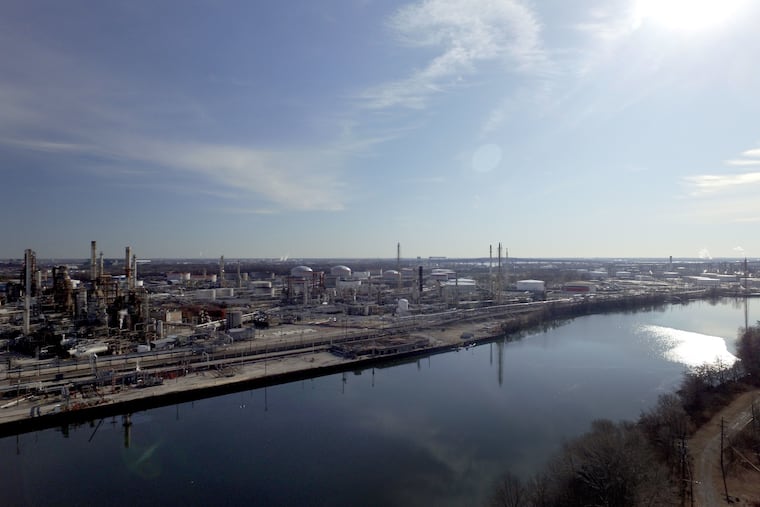Philly must plan for a post-refinery future | Editorial
As potential buyers of Philly's closed PES refinery in argue in and out of court, a process to include the public, environmentalists, and professional planners in shaping the future of the 1,300-acre, heavily contaminated site must be a part of the process.

A hearing scheduled for this week by U.S. Bankruptcy Court Judge Kevin Gross in Wilmington could affirm a reorganization plan calling for the sale of the shuttered Philadelphia Energy Solutions refinery complex. The refinery closed last June after a spectacular fire.
But whatever the site’s economic prospects or ultimate use, the heavily contaminated 1,300-acre property on the city’s southeastern gateway deserves a high level of public involvement and stewardship. Mayor Jim Kenney’s Refinery Advisory Group was a good start, and Drexel University’s Lindy Institute for Urban Innovation recently began holding public meetings and brainstorming sessions to bring community values and voices into the larger conversation about the site’s future. We strongly support this effort and its goal to ensure these 1,300 acres continue contributing to the vitality of the city and the region.
PES declared bankruptcy a month after the 2019 fire and in January accepted a $240 million bid from Hilco Redevelopment Partners, a Chicago firm that re-purposes old industrial properties. Hilco was not the highest bidder, and a rival group seeks to resume refinery operations and preserve at least some of the 1,100 jobs lost in the closure. The battle heated up late last week as unsecured creditors called the bids flawed and asked the judge not to approve the plan.
There’s more at stake than simply satisfying creditors, however. The 1,300 acres along the eastbound Schuylkill Expressway and lower Schylkill river include more land than all of Center City and are close to the Navy Yard, Pennovation Works, and Philadelphia International Airport. The site is across the river from the growing expanse of parkland and recreational amenities connecting residential neighborhoods with the water and the heart of the city.
The petroleum operations that began at the PES site in 1866 have left behind a challenging legacy of environmental contamination that requires complicated and costly remediation. Longstanding health and safety concerns among residents of the working-class neighborhoods around the refinery complex have been exacerbated by the fire and subsequent revelations of how catastrophic it could have been. And as the Inquirer’s Andrew Maykuth reported, deed restrictions limit use of the property for anything unrelated to energy or chemical production, and exclude development of housing or recreational areas. Some local residents and others hope to see parks and open space on at least part of the site, and whether or how any such amenities could be provided isn’t clear.
What’s clear is that 113,000 people live within a mile of the refinery property’s fence line. As much as any creditors or investors, they have a stake in what happens and doesn’t happen there, and in whether and when contamination is remediated. Lindy Institute executive director Harris M. Steinberg points out that the city has zoning, planning, construction regulations and many other tools to influence the use of private property, and so is hardly a passive bystander in the industrial landscape’s evolution or transition. Any conversation about this important piece of Philadelphia’s past and future must include the voices of communities that will continue living with the legacy of fossil fuel production’s heyday — no matter who prevails in bankruptcy court.